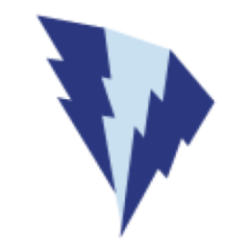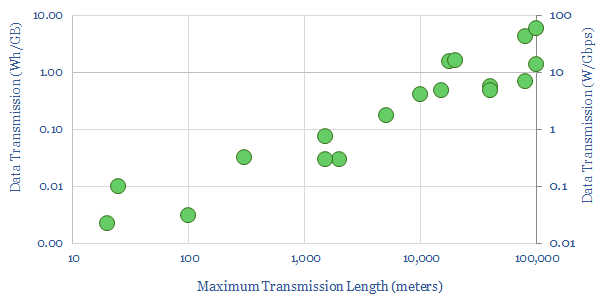
…cables will have 1-2 orders-of-magnitude lower energy consumption (chart below). Thus the energy intensity of fiber optic cables is not a fixed number, but highly context-sensitive. Energy consumption will continue…
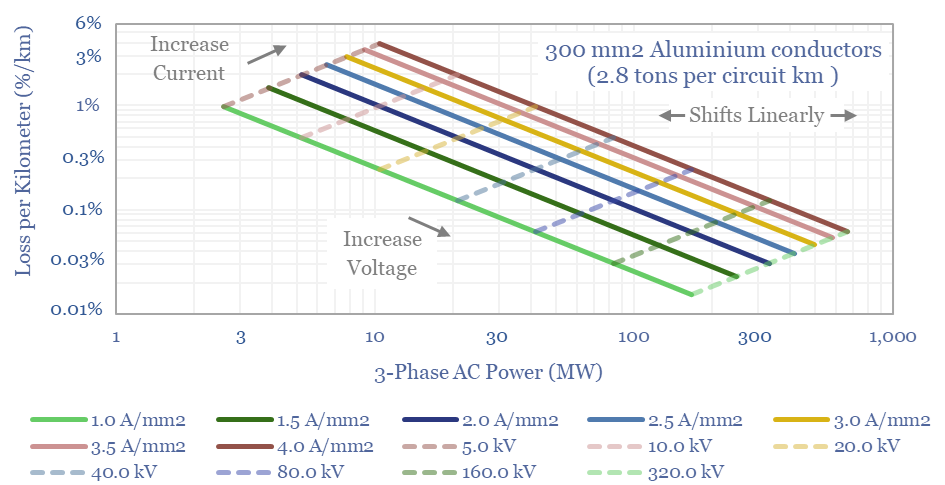
This data-file calculates the power carrying capacity of power cables, plus the resistive losses of power cables. Both are modeled as a function of their voltage, current density, copper and/or…
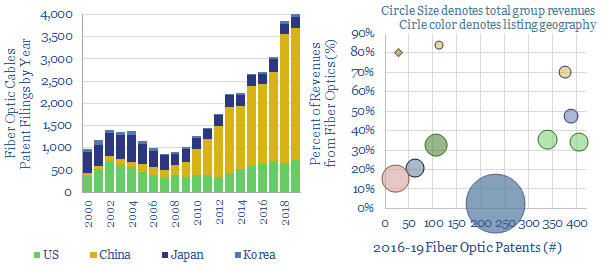
This data-file screens for the technology leaders in fiber-optic cables, which are crucial for the digitization of industries and the world’s structural shift towards remote-working. $359.00 – Purchase Checkout Added to cart…
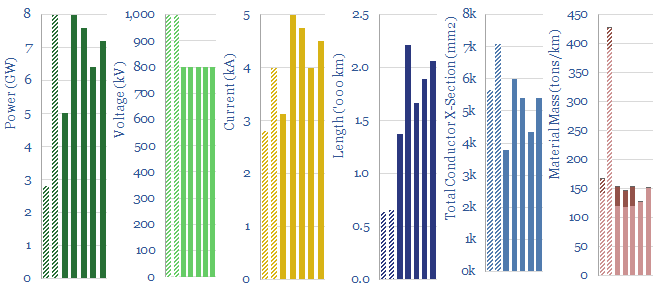
…distance of 1,500 km. Towers. Every 500 meters, there is a 70m tall tower, which weighs 80 tons. Cables. Each tower supports 2-3 cable bundles, comprising 6-8 sub-conductors. Each of…
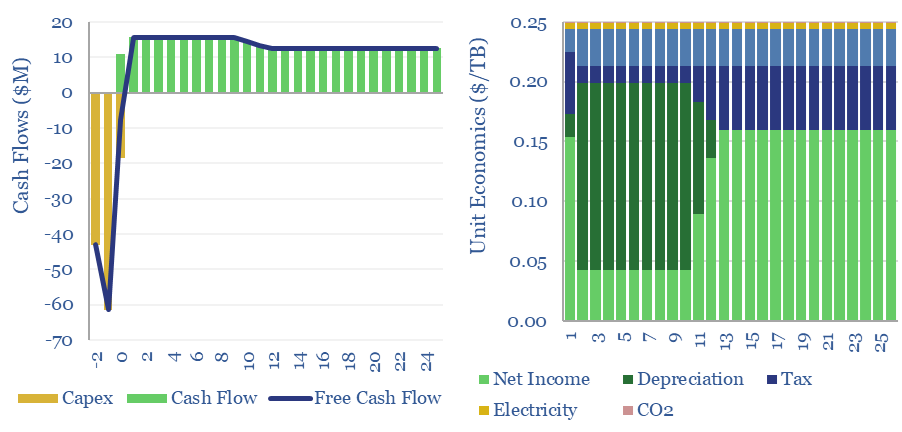
…cables. Other factors that impact the capex costs of fiber optic cables: underground cables cost around 2-3x aerial cables. Undergrounding costs are also higher in rockier soil types and in…
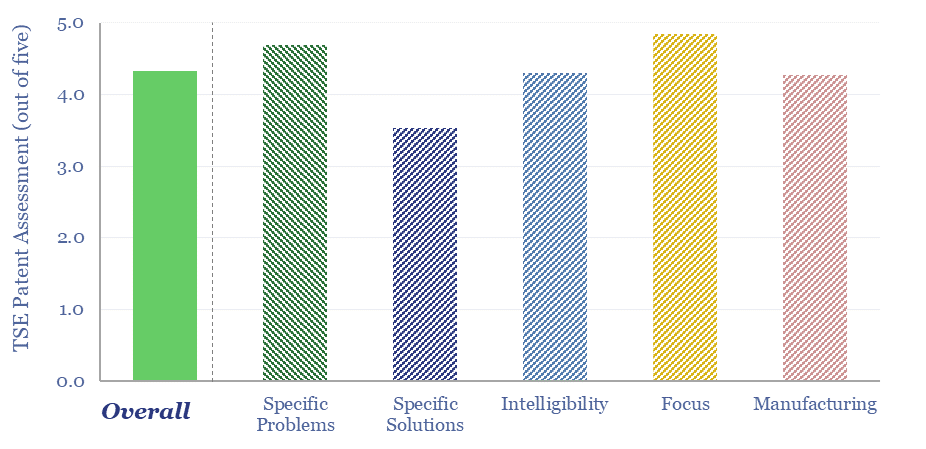
…that can be applied to the outside of power transmission cables, thereby helping the conductors to dissipate heat. This matters as hot cables are more resistive and also tend to…
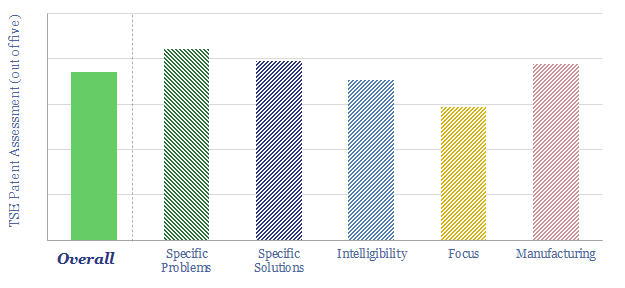
…Large power cables are challenging, because current flows generate heat via the Joule effect. Power cables must not heat up above 90C, or it can cause safety issues and damage…
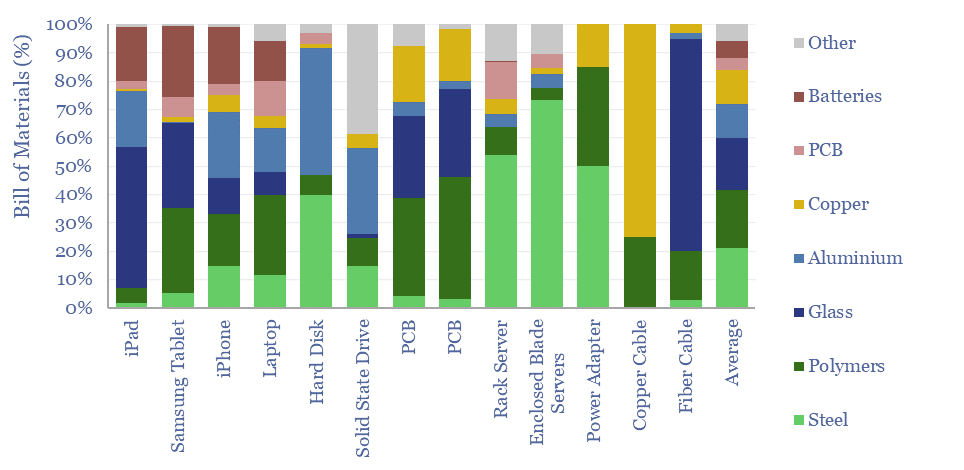
…phones, tablets, laptops, hard discs, solid state-drives, printed circuit boards, servers in data-centers, power supply units, adapters, copper cables and fiber optic cables. Five materials make up c85% of the…
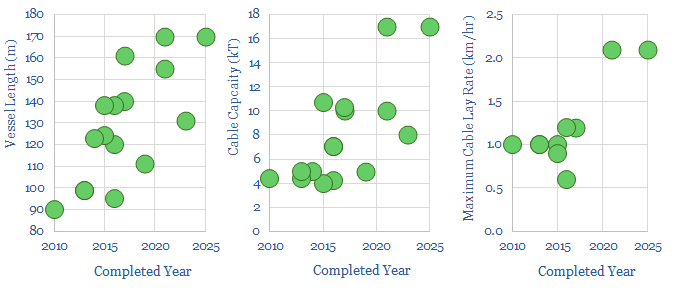
…capacity, and thus can lay a staggering 2.1 km of cables per hour, in water depths up to 3,000 meters, with ultra-redundant DP3 positioning. Similarly, Van Oord’s new Calypso vessel…
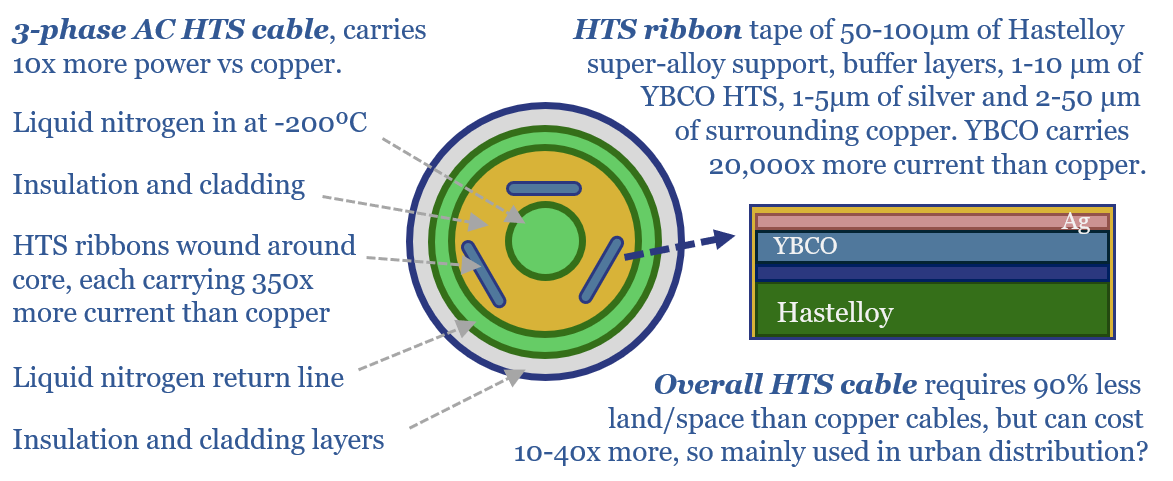
…this 16-page report explores whether HTS cables will now accelerate to defray power grid bottlenecks? And who benefits within the supply chain? $599.00 – Purchase Checkout Added to cart Superconductivity is a…

